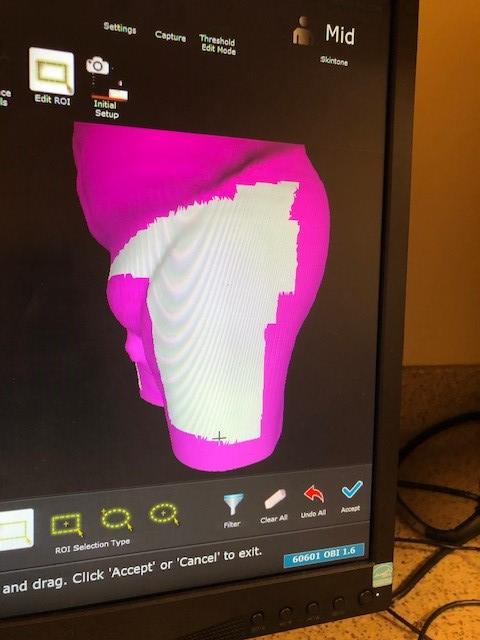- Wed Mar 24, 2021 6:43 pm
#265
Hi
I would like to give fresh updated findings based on larger image evaluation concerning pelvis setup with AlignRT. I have done offline review evaluation based on bony structures on 2D/2D kV-images from 90 patients (45 AlignRT and 45 laser setup). I investigated the residual errors in the isocenter and rotations (rot, pitch) from setup to midway compromise of symphysis and sacrum/L5 before couch corrections and errors between symphysis and sacrum, without daily IGRT as well. So, in practice the values of the 1) daily online couch corrections (VRT, LNG, LAT) were added to 2) residual errors for the named bony structure in the offline match, to get a residual error to the bony structure without image guidance. In the online match pitch couch correction was not done and if in the online match rotation was performed, it was taken into account in the results, to achieve results of residual errors without online rotation corrections. For example if the couch correction in LNG in the online match was +5 mm, I matched the image offline to compromise location of symphysis and sacrum/L5 and achieved the offline correction of - 5 mm there, finally the LNG error from setup to midway location of symphysis and sacrum/L5 was 0 mm. I am not giving results here now, but I would like to share some main findings. In this data, with AlignRT, LNG, LAT, VRT and ROT were corrected with send to couch- feature (to zero). In laser group, delta couch shift- function was in use after setup to reference tattoos. In the study, for each patients we used such ROI that VisionRT suggests in the ROI guidelines.
With AlignRT setup, residual LNG and pitch errors (in the images in the acquisition position) are the things that we need to improve in the future, because there were no difference between the groups. Specially, in LNG isocenter there were both rather large systematic and random errors, discrepancy between AlignRT deltas and the acquisition images. To improve this, maybe we should additionally use postural setup, pay more attention to that clothes are not too close to ROI and try to improve the pitch error in bony pelvis in general, beginning from CT and fixation. We have not setup the patients to zero pitch based on AlignRT, instead 3° tolerance was in use. To setup the patient to zero pitch error with AlignRT is rather difficult and time consuming, but it would be interesting to see how much it improves noticed LNG- and pitch displacements in the images. It is possible that noticed pitch- and LNG errors are related with each other.
LAT- and VRT- errors are small in the online match after AlignRT setup, remarkably smaller than with laser setup, in both systematic and random errors (1.0-1.9 mm). Residual rotation errors before online couch corrections (pelvis bony rotation and pitch evaluated in this study, not roll) are small enough to correct with daily IGRT without re-setups, in other words typically always smaller than 3° in AlignRT group. Daily IGRT is needed in both groups and this improves the accuracy on the bony structures remarkably. Margin needed for compromise location of symphysis and sacrum/L5 in LNG is around 9 mm in both groups without IGRT. The time used for setup is small (1 min) in both laser and AlignRT groups. Setup workflow is practical in both groups.
Lately, after this study, we have not delineated the ROI as caudally as suggested by VisionRT guidelines. This seems to be comfortable practice for the patient and for the user and the accuracy on the bony pelvis seems to be good as well. With this workflow, we sometimes notice displacement of LNG delta at time images are acquired and cameras are blocked. The reason may be this narrow ROI in LNG direction. Deltas comes back to zero at the time cameras are not blocked any more.
Small amount of papers exists in the literature concerning pelvis setup with AlignRT. May be the reasons are that typically daily CBCT is acquired, internal anatomy plays a big role in the image evaluation and daily 3D/6D couch corrections are performed to efficiently reduce daily isocenter and rotation errors. For those reasons, it may be not that important to know how much there is needs to do online couch corrections for isocenter or even for rotations due to daily bony structure displacement after setup, as was the question in this study. On the other hand, 6D couches are not necessarily available in all hospitals to correct the posture errors of the (bony) pelvis and additionally bony structures are still used for matching locations in several cases in pelvis. Pelvis in general is a big group of patients in RT. To leave this group outside the AlignRT setup workflow can be a big loss for example to the learning curve of the users when implementing the system into daily use. Based on the data and experience that I have, it is practical and accurate to setup pelvis patients with AlignRT.
Best regards Marko


